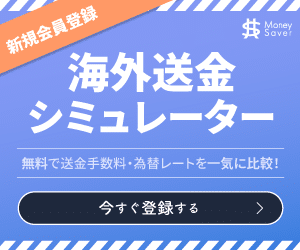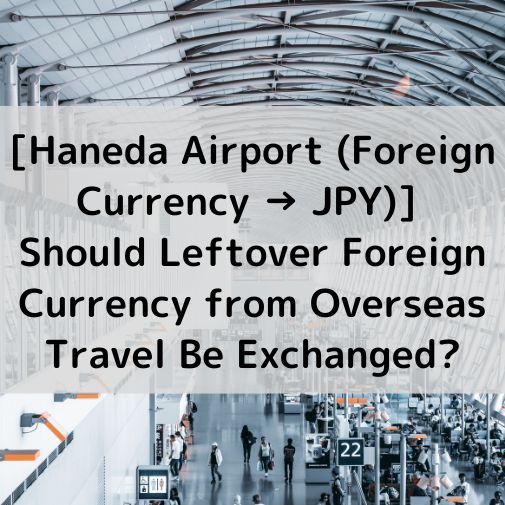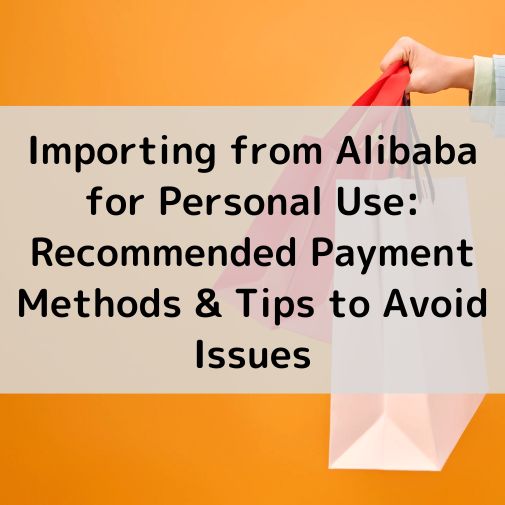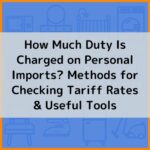What Are Customs Duties? When, How Much, and to Whom Are They Paid? An Explanation for Those Interested in Personal Imports
2024-09-10

- This article is for reference only as it is merely a translated version of the Japanese article below.
関税とは?いつ・いくら・誰に払う?個人輸入で気になるポイントを解説 (Japanese version)
With the growing popularity of cross-border e-commerce sites, more people are shopping on overseas online stores and starting personal import businesses.
However, many individuals may feel uncertain about how much they will be charged for taxes such as customs duties, as they are unfamiliar with these costs.
This article provides essential information on customs duties, including basic knowledge and calculation methods, which are helpful for anyone beginning personal imports.
It also explains how to pay customs duties based on the delivery method, allowing for a smooth and stress-free process.
To profit from personal imports, it is important to pay attention not only to customs duties but also to remittance fees and exchange rates when making payments.
The “Overseas Remittance Simulator” compares the services of about 30 overseas remittance providers at once! It’s free to use, so be sure to check it out before making any transfers!
\Identify the most affordable service provider in just 5 seconds/
✅ First usage is free of charge
What Are Customs Duties?
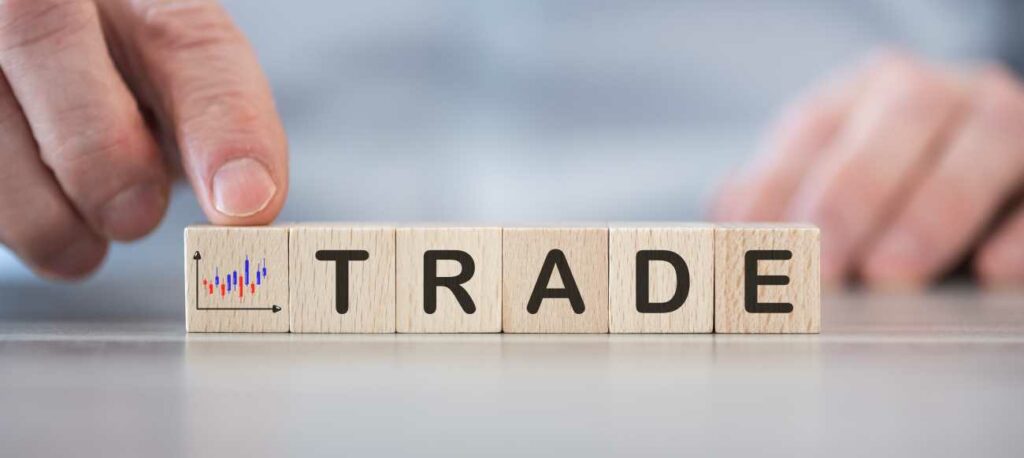
Customs duties are taxes imposed on goods that cross national borders during import or export. Generally, they are defined as “taxes levied on imported goods.”
Source: Ministry of Finance: Overview of Japan’s Customs System
There are two types of customs duties:
- Import duties, which are imposed by the importing country when goods are brought in, and
- Export duties, which are imposed by the exporting country when goods are sent out.
Japan does not impose export duties. This is because such taxes could hinder free exports and reduce the international competitiveness of domestic products.
Why Are Customs Duties Necessary?
Customs duties serve two primary purposes:
- Securing national revenue
- Protecting domestic industries
Each of these points will be explained in more detail.
Securing National Revenue
Customs duties are one of the significant sources of government revenue. This income is used for various public services and projects that benefit citizens, such as infrastructure development.
Protecting Domestic Industries
Customs duties help protect domestic industries by shielding local companies that produce similar products from competition with foreign goods.
For example, if low-cost products are imported from abroad, domestic businesses may face intense price competition. To mitigate this, customs duties are imposed to reduce the price difference between domestic and imported products.
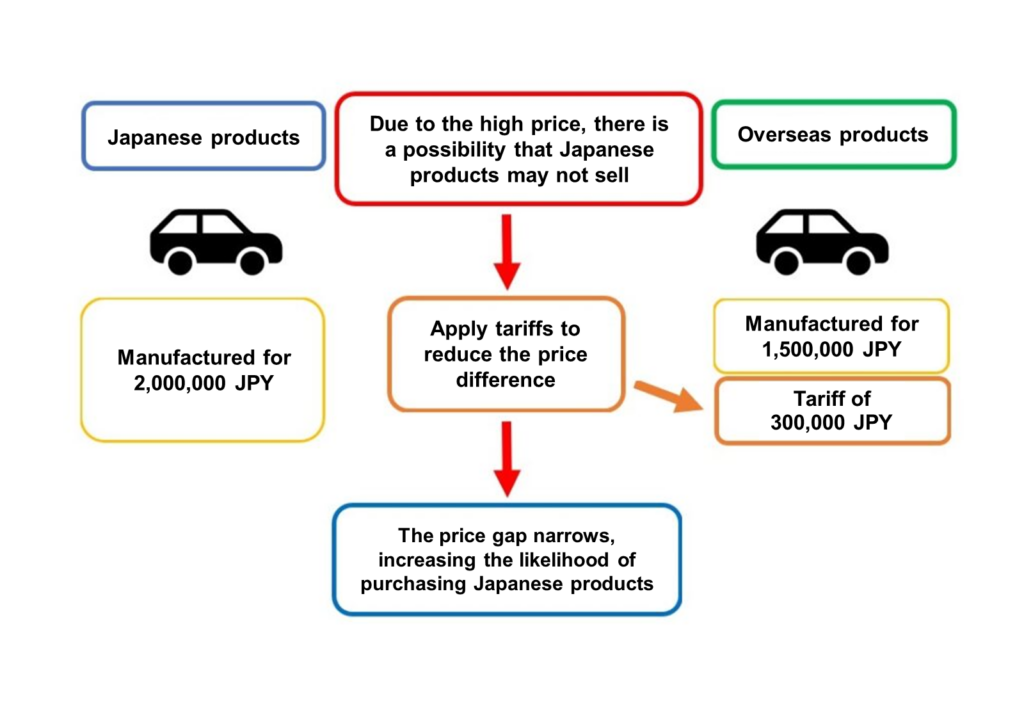
What Are the Types of Customs Duties?
Customs duties are divided into two types: “fiscal tariffs,” which are intended to raise national revenue, and “protective tariffs,” which are aimed at protecting domestic industries.
Fiscal Tariffs
Fiscal tariffs are taxes primarily imposed on imported goods to increase government revenue. These tariffs typically apply to products that are difficult to produce domestically or to luxury and premium items.
In modern developed countries, fiscal tariffs account for a small portion of total tariffs, with most duties being protective tariffs.
Protective Tariffs
Protective tariffs are taxes levied on imported goods to protect domestic industries from competition with foreign products. Examples of goods subject to protective tariffs include agricultural products like rice, wheat, beef, and dairy products, as well as automobiles, steel, textiles, and electronic goods.
What Are the International Rules for Customs Systems?

Japan’s customs system adheres to common rules established with member countries of the WTO
Japan is a member of the World Trade Organization (WTO), which was established in 1995 as an international organization to set and manage rules for global trade. More than 160 countries are WTO members, and most countries worldwide conduct trade according to WTO regulations.
What Are the Types of Tariff Rates?
Japan’s tariff rates are divided into two types: “statutory rates,” which are set by law, and “conventional rates (WTO concessionary rates),” which are determined by international treaties.
Both types are explained below.
Statutory Rates
Japan has two laws that determine the tax rates imposed on imported goods: the “Customs Tariff Law” and the “Customs Temporary Measures Law.”
The Customs Tariff Law establishes the basic tariff rates, which apply under normal circumstances. It sets the rates for 7,658 items.
On the other hand, the Customs Temporary Measures Law determines temporary tax rates applied in special circumstances. It covers 412 rates, and these temporary rates take precedence over the basic rates.
Additionally, the Customs Temporary Measures Law includes special tariff rates (preferential tariffs) applied to goods imported from developing countries.
These rates are set lower than usual, but specific conditions must be met for them to apply.
Conventional Rates (WTO Concessionary Rates)
WTO member countries have agreed not to impose tariffs beyond a certain rate. This is known as the “conventional rate.”
The conventional rate applies to imported goods from all WTO member countries, and even countries that are not WTO members but have signed bilateral agreements with Japan can benefit from the same rate as WTO members.
Moreover, imported goods from countries with which Japan has signed Economic Partnership Agreements (EPAs) are subject to even lower tariff rates. These EPA rates take precedence over both statutory and conventional rates.
Japan has signed EPAs with many countries and regions, including Singapore, Mexico, Malaysia, as well as multilateral agreements such as the CPTPP and RCEP.
In principle, tariff rates are applied in the following order of priority: preferential rates → conventional rates → temporary rates → basic rates. However, preferential rates apply only if specific conditions are met, and conventional rates are applied if they are lower than the temporary or basic rates.
For items subject to EPA rates, if the EPA rate is equal to or lower than the general preferential rate, the general preferential rate will not apply.
Reference: Japan Customs “Tariff Rates Established by Treaties”

When Do Customs Duties Arise, and How Are They Paid?
Customs duties are the responsibility of the importer (purchaser).
This applies whether companies or individuals are importing goods, such as personal clothing or accessories purchased from overseas online stores.
Timing of Customs Duties
Customs duties are incurred during the customs clearance process. Once the imported goods cross the border, the customs authorities of the respective country examine the nature, value, and quantity of the products to calculate the applicable customs duties.
Once customs clearance is complete, and all necessary payments such as customs duties and consumption taxes have been made, an import permit is issued, allowing the recipient to collect the goods.
Payment Methods for Customs Duties
In most cases, the delivery company handles the customs clearance process and payment of customs duties on behalf of the importer. The recipient is then required to reimburse the delivery company for the customs duties paid in advance.
The method of customs duty payment differs depending on the mode of transportation used for the goods.
International Postal Service
- For goods and gifts with a taxable value under 200,000 JPY
No special declaration is required for goods with a taxable value under 200,000 JPY. The customs authorities determine the duty amount, and the nearest post office delivers the goods directly to the recipient. The recipient can receive the goods by paying the taxes and a handling fee to the post office at the time of delivery.
- For goods exceeding 200,000 JPY in taxable value (excluding gifts)
If the taxable value exceeds 200,000 JPY, a “Tax Notification for International Postal Items” will be sent. Upon receiving a payment slip from the post office specified in the notification and paying the required taxes, the goods will be released to the recipient.
In cases where a postcard titled “Customs Clearance Notice for Postal Items Arriving from Abroad” is received, the recipient must either visit the customs office listed on the postcard with the required documents or send them via mail.
International Courier Services
When using international courier services, the customs clearance process is usually handled by the shipping company. The recipient pays the customs duties and handling fees directly to the driver upon delivery.
General Cargo
For general cargo arriving in Japan, the recipient will receive a notification from the airline or shipping company. The recipient must prepare the necessary documents, such as the import declaration, invoice, and bill of lading, and complete the customs clearance process at the customs office responsible for the bonded area where the goods are stored.
The required taxes must be paid before the goods can be collected. The customs clearance process can also be outsourced to a customs broker.
How Are Customs Duties Calculated?
Customs duties are calculated using the following formula:
Customs Duty = “Taxable Value” × “Customs Duty Rate”
The taxable value is the price of the goods at the time of arrival at the import port. In trade terms, this is known as the CIF (Cost, Insurance, Freight) price, which includes the product cost, shipping charges to the import port, and insurance fees.
As an exception, for goods imported for personal use, the taxable value is set at 60% of the overseas retail price. Additionally, goods with a total taxable value under 10,000 JPY are exempt from customs duties and consumption tax.
However, certain items, such as leather bags, footwear, and knitwear, are not exempt from duties even if their taxable value is below 10,000 JPY. It is important to be aware of these exceptions.
Moreover, other domestic consumption taxes (such as liquor tax or tobacco tax) may still apply, even if the goods are exempt from customs and consumption taxes.
What Are Standard and Simplified Duty Rates?
Next, we will explain the customs duty rates.
Customs duty rates are classified into two types: the general rates, known as the “applied tariff rates,” which are specified by laws and treaties, and the simplified rates, which apply to goods with a taxable value of 200,000 JPY or less.
General Rates
These standard rates apply to imported goods when no reductions or exemptions from specific international agreements or special measures are in place. The rates are classified into thousands of categories depending on the type, composition, and materials of the products. The applicable rate for each item is based on the tariff table established by the Ministry of Finance.
Reference: Japan Customs: Applied Tariff Rate Table (as of January 1, 2024)
Simplified Rates
Simplified rates apply to goods with a taxable value of 200,000 JPY or less. These rates are divided into seven broad categories and are applicable to both personal and commercial imports. Simplified rates are easier to understand and calculate compared to the applied tariff rates.
Simplified Tariff Rate Table for Small-Value Imports (Customs Tariff Law, Article 3-3)
| Items [Specific Item Examples] | Customs Duty Rates | |
| 1 | Alcoholic Beverages (1) Wine (2) Distilled spirits such as shochu (3) Sake, apple cider, etc. | 70 JPY per liter 20 JPY per liter 30 JPY per liter |
| 2 | Tomato sauce, ice cream, tanned fur (drop skin), fur products, etc. | 20% |
| 3 | Coffee, tea (excluding black tea), tanned fur (excluding drop skin), etc. | 15% |
| 4 | Clothing and accessories (excluding knit or crocheted items), etc. | 10% |
| 5 | Plastic products, glassware, base metal products (copper, aluminum, etc.), furniture, etc. | 3% |
| 6 | Rubber, paper, ceramic products, steel products, tin products | Duty-free |
| 7 | Other items | |
Customs: Simplified Tariff Rates for Low-Value Imports
Note: Some imported goods are not eligible for simplified tariff rates.
Summary
This article provided an overview of key information about customs duties, a point of interest for those involved in personal imports. When importing goods personally, it is important to factor in customs duties when calculating overall costs. It is recommended to check in advance how much customs duty will apply to the goods being imported.
Additionally, it is essential to consider the money transfer fees and exchange rates that may apply when making payments. The “International Money Transfer Simulator” allows users to compare the services of approximately 20 international money transfer companies at once. Since it is free to use, it is highly recommended to check it before making any payments!
\Identify the most affordable service provider in just 5 seconds/
✅ First usage is free of charge


 Language
Language
